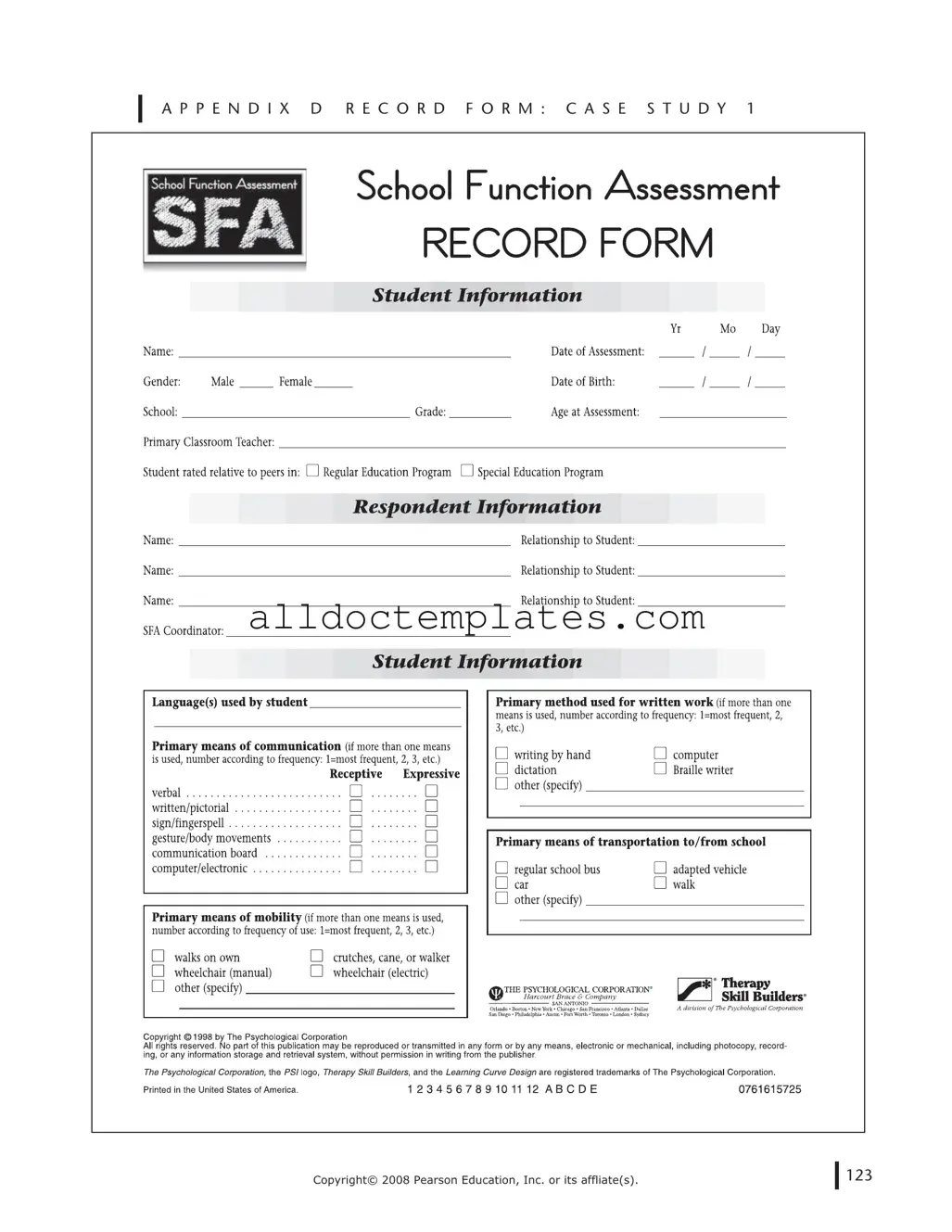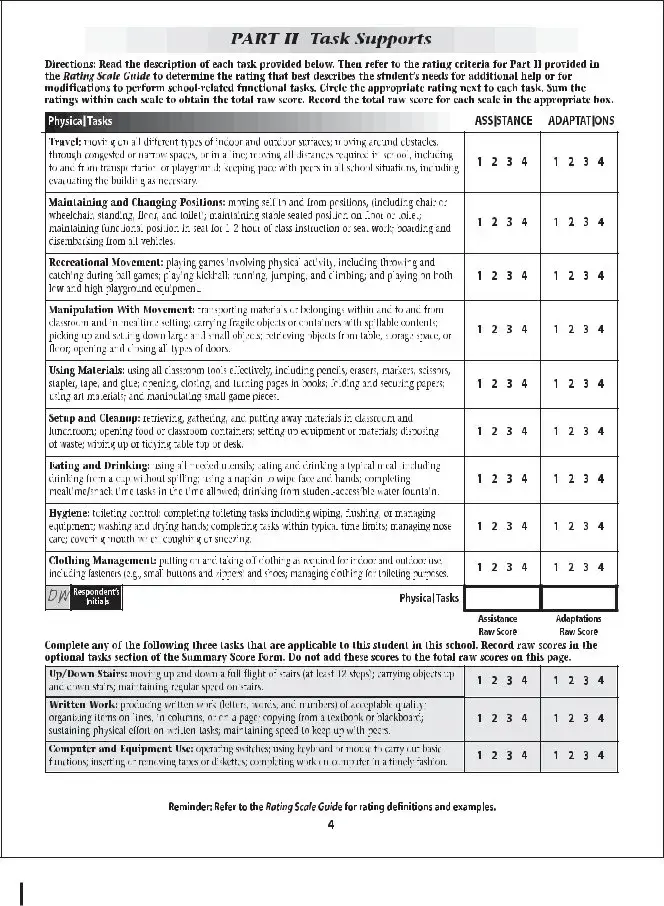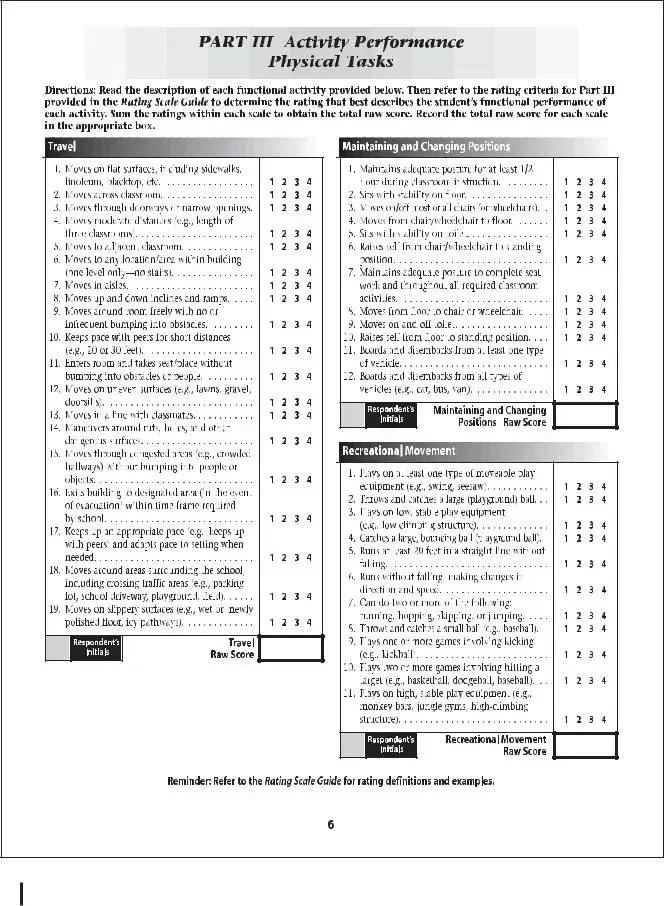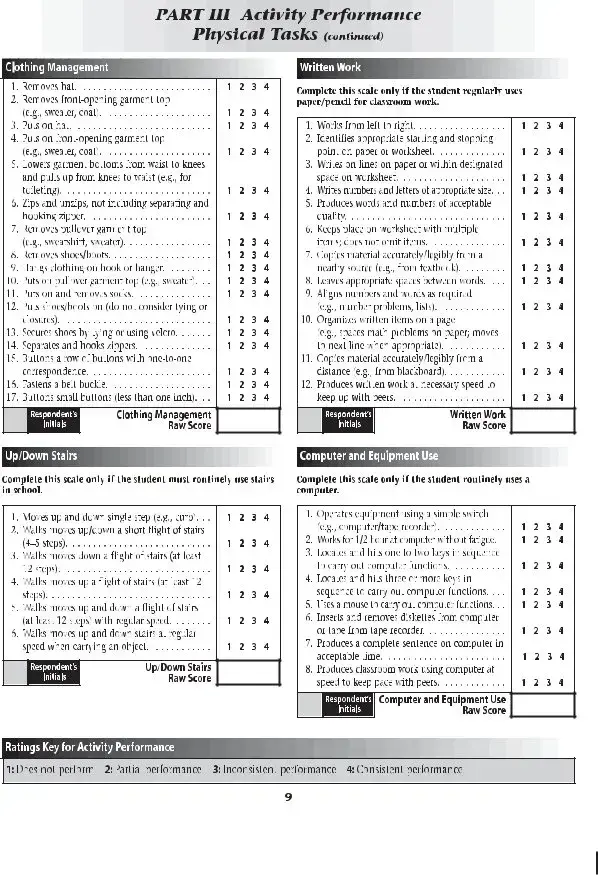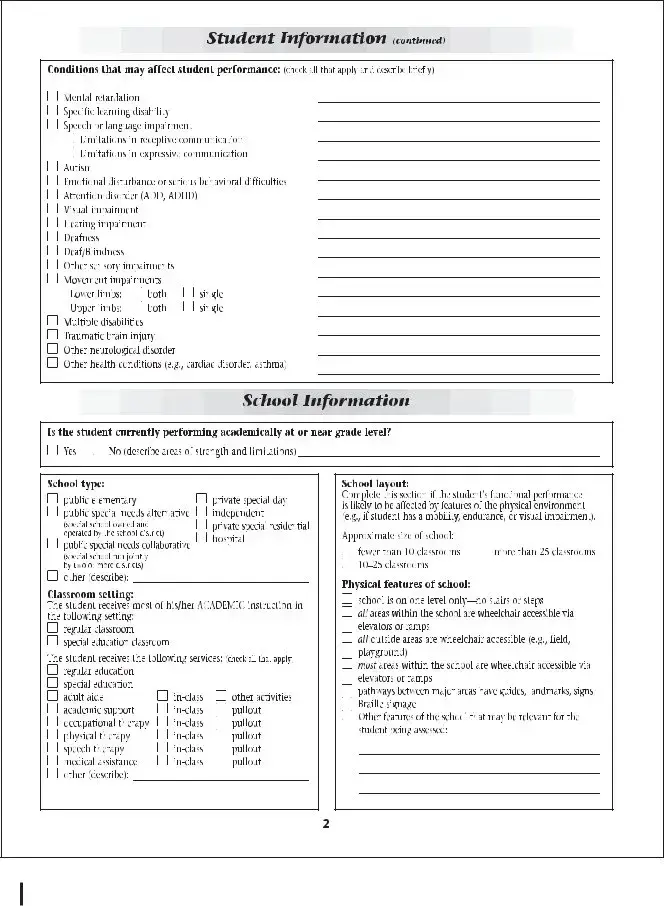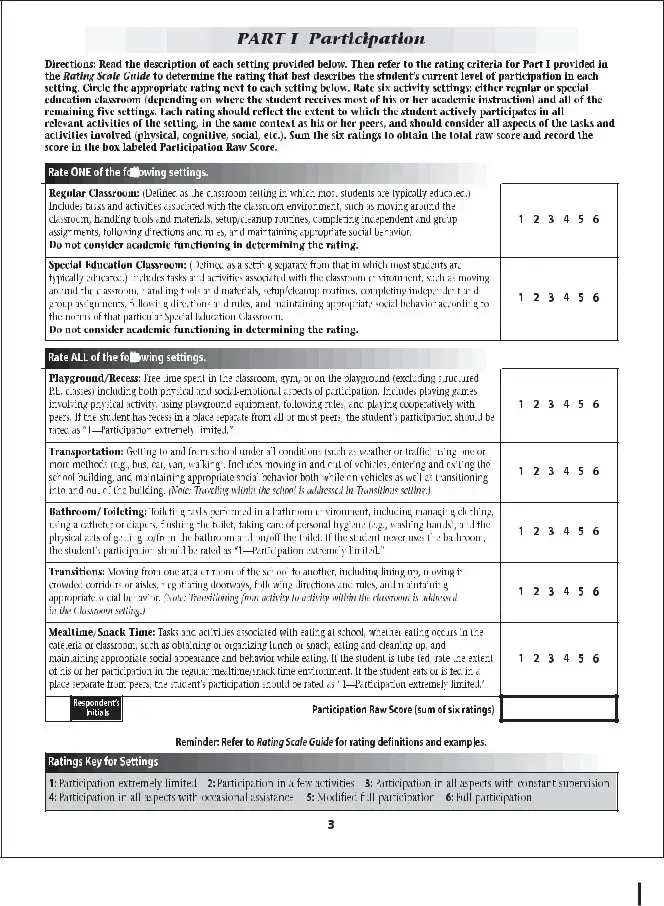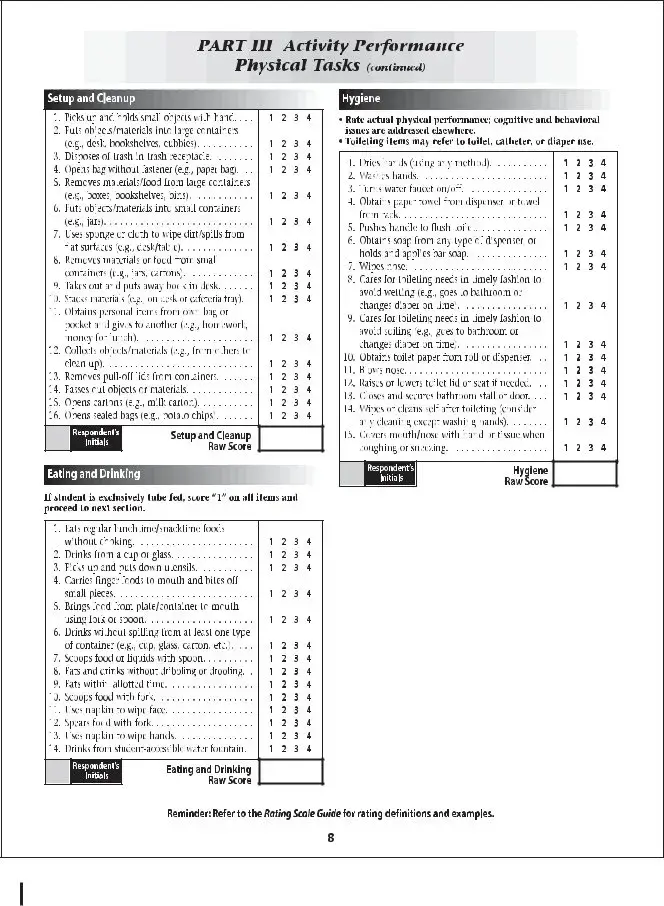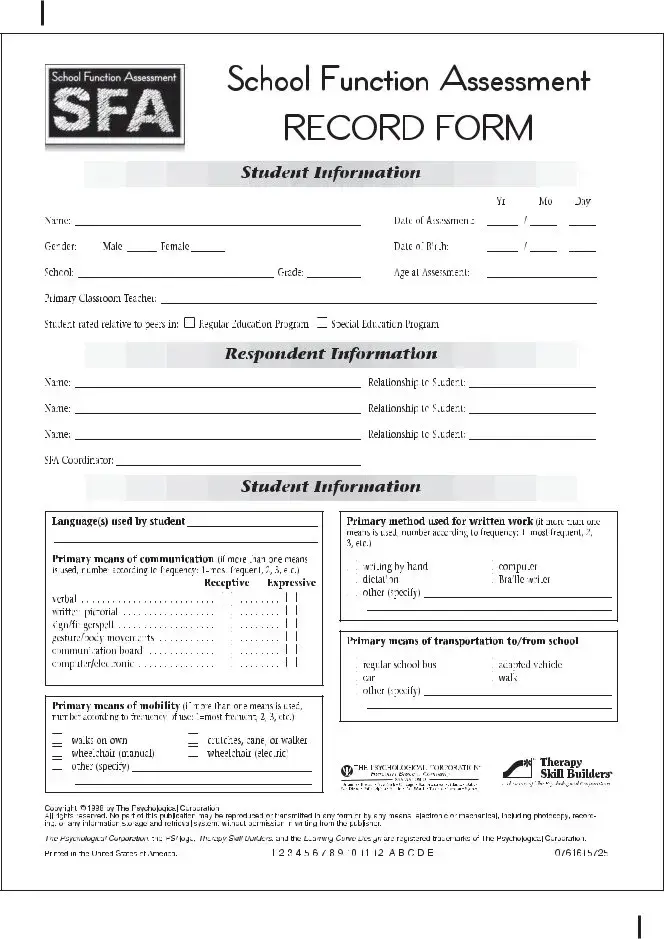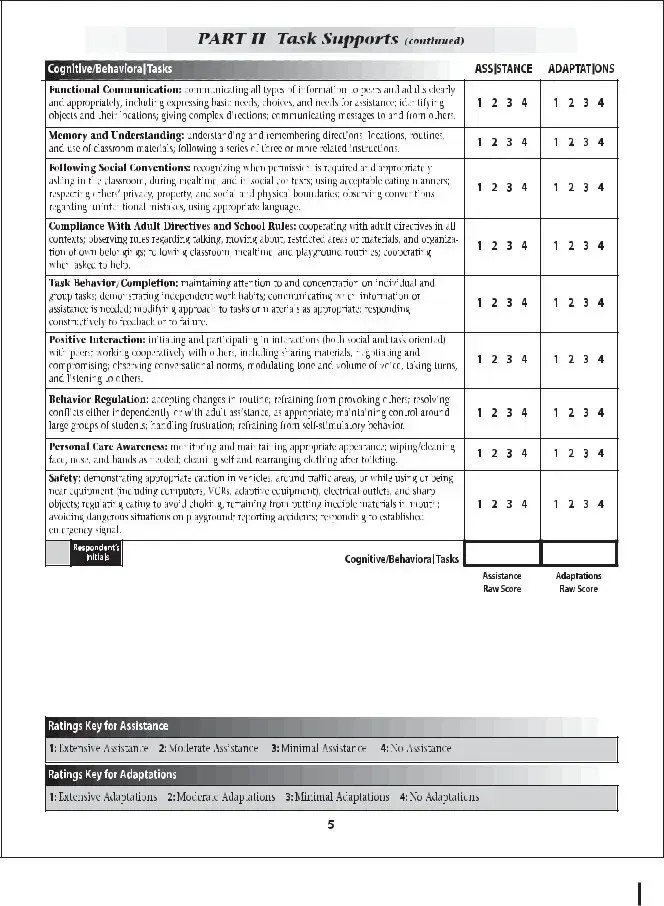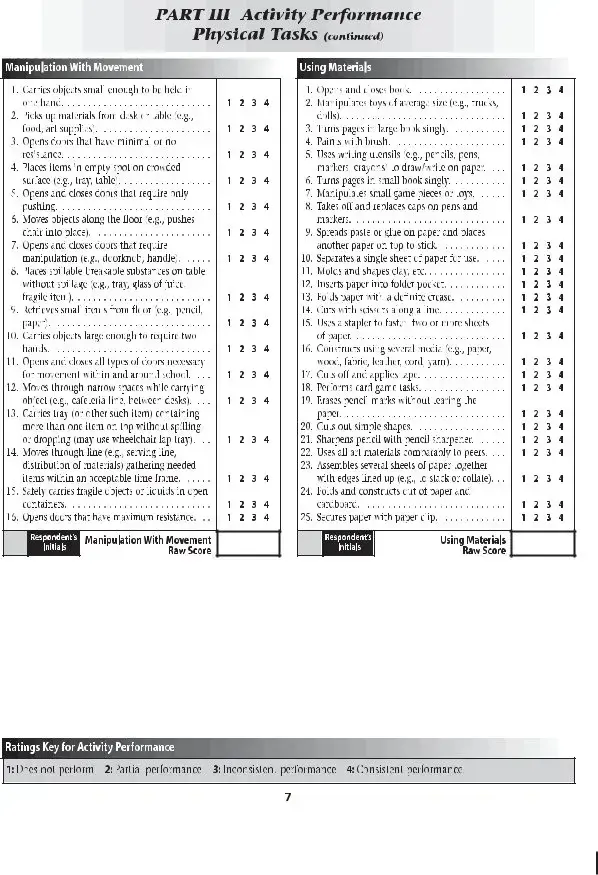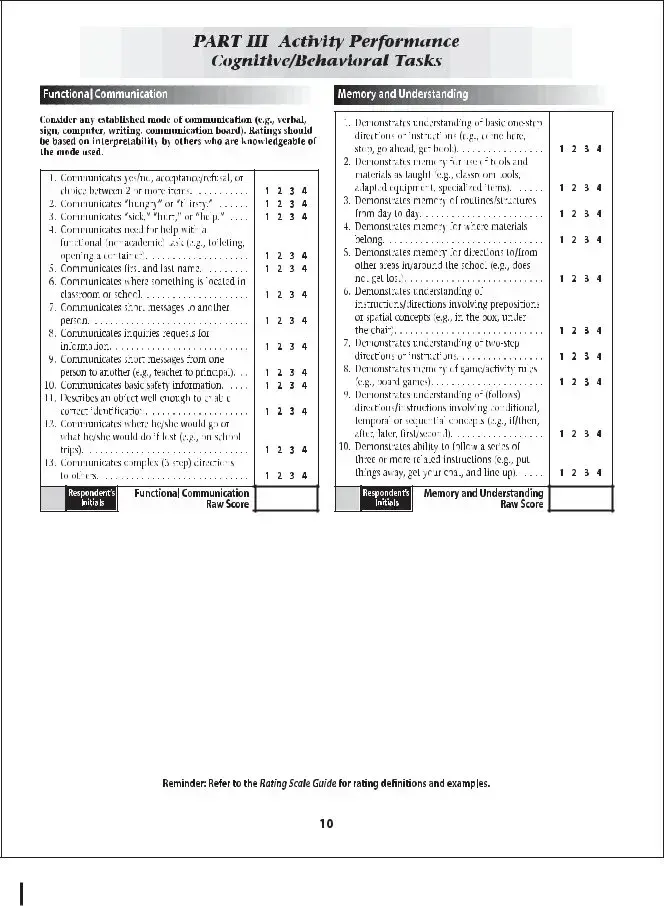Fill in a Valid School Function Assessment Form
The School Function Assessment form is a tool used to evaluate a student's performance in various school-related tasks. This assessment helps identify areas where support may be needed to enhance a child's educational experience. By focusing on functional skills, educators and parents can work together to create effective strategies for success.
Get Your Form Now
